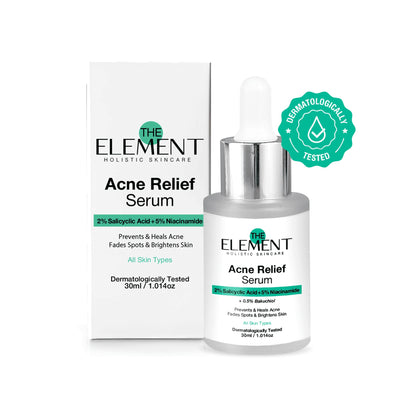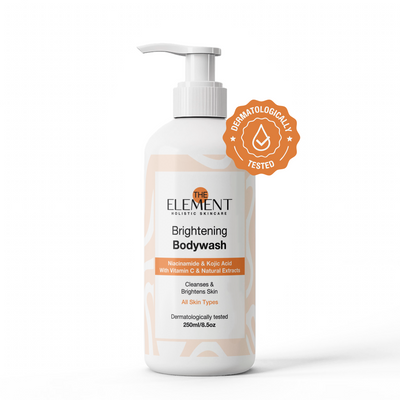Pore Size: What’s Normal, What’s Not, and When to Seek Solutions

Introduction
Pore size is a top concern for anyone seeking smooth, healthy-looking skin. While everyone has pores, their size and visibility can vary widely. Understanding what’s normal for skin pore size, what causes pores to become enlarged or congested, and when to look for solutions is key to achieving your best complexion. In this article, we’ll break down the science of pore size, provide real measurements with references, and offer expert advice for managing congested skin.
What Is Pore Size? Actual Measurements and References
Pores are tiny openings in the skin that house hair follicles and sebaceous (oil) glands. Their size is measured in micrometers (μm), also called microns.
Actual Pore Size Data:
-
Average facial pore size:
Most facial pores range from 50 to 70 micrometers (μm) in diameter (source: Dermatologic Surgery, 2016). -
Small pores:
Less than 40 μm in diameter. -
Medium pores:
Between 40–70 μm in diameter. -
Large pores:
Greater than 70 μm in diameter.
For comparison, a human hair is about 70–100 μm thick.
What Is Considered Normal Pore Size?
- Normal skin pore size typically falls between 40–70 μm.
- Pores in this range are usually not highly visible except on close inspection or in areas with more oil glands (like the nose and chin).
- Small pores (<40 μm) are less visible and often found in people with dry or normal skin.
When is Pore Size Not Normal?
- Enlarged pores (>70 μm) are considered above average and are more visible, especially in oily or combination skin types.
- If pores are easily seen at a normal conversation distance, they are likely enlarged.
What Causes Enlarged or Congested Skin Pores?
Several factors influence skin pore size and can lead to congested skin:
- Genetics: The primary determinant of your natural pore size.
- Sebum (oil) production: Excess oil stretches pores, making them appear larger.
- Age: Collagen and elastin loss with age causes pores to look bigger.
- Sun damage: UV exposure breaks down skin support structures, enlarging pores.
- Congested skin: Clogged pores filled with oil, dead skin cells, and debris appear larger and can lead to bumpy, uneven texture.
- Improper skincare: Using comedogenic products or not cleansing properly can worsen congestion.
When Should You Look for Solutions?
You should consider targeted solutions for pore size and congested skin if:
- Your pores are consistently larger than 70 μm and highly visible.
- You notice frequent blackheads, whiteheads, or bumpy, congested skin.
- Your skin texture appears rough or uneven.
- Over-the-counter products and basic skincare routines aren’t improving your pore appearance.
- Enlarged pores are affecting your confidence or quality of life.
Expert Insight:
“Visible, enlarged pores are often a sign of underlying congestion or excess oil production. If you’re noticing persistent changes in your skin’s texture or frequent breakouts, it’s time to upgrade your skincare routine or consult a dermatologist,” says Dr. Shilpi Khetarpal, MD, board-certified dermatologist at the Cleveland Clinic.
How to Manage Enlarged and Congested Pores
1. Gentle Cleansing:
Use a mild, non-comedogenic cleanser twice daily to remove oil and debris.
2. Exfoliation:
Incorporate chemical exfoliants like salicylic acid (BHA) or glycolic acid (AHA) 2–3 times per week to keep pores clear.
3. Targeted Serums:
Niacinamide helps regulate oil production and improve skin texture. Salicylic acid penetrates pores to dissolve congestion.
4. Sun Protection:
Daily sunscreen prevents collagen breakdown and further pore enlargement.
5. Professional Treatments:
Consider chemical peels, microdermabrasion, or laser therapy for stubborn cases.
Frequently Asked Questions (FAQ)
Q: What is the average skin pore size?
A: Most facial pores are 50–70 μm in diameter. Pores larger than 70 μm are considered enlarged.
Q: Is it possible to permanently shrink pores?
A: No, but you can minimize their appearance and prevent further enlargement with proper skincare.
Q: When should I see a dermatologist about my pores?
A: If you have persistent congestion, frequent breakouts, or pores that are highly visible and not improving with over-the-counter products.
Q: What ingredients help with congested skin and pore size?
A: Salicylic acid, niacinamide, retinoids, and gentle exfoliants are effective.
Conclusion
Understanding your skin pore size—and what’s normal—can help you make informed decisions about your skincare routine. If you notice enlarged or congested pores, especially those greater than 70 μm, it’s time to consider targeted solutions. With the right approach, you can achieve smoother, clearer skin and boost your confidence.






